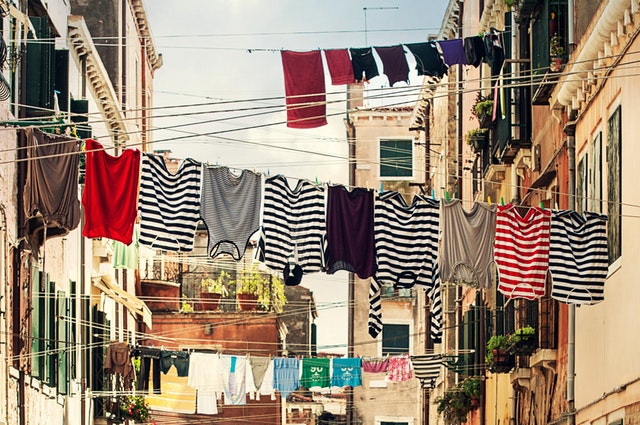
Because clothes washing needs to be done regularly, and a lot of mains water is involved every single session, it’s safe to say that clothes washing is one of the culprits behind high monthly water bills. But if you substitute mains water with collected rainwater, the likelihood of having a high water bill each month is significantly reduced.
The thing with substituting mains water with collected rainwater in the laundry room, however, is that truly getting the most savings out of its use in that part of the home means knowing how to properly harness its power.
What’s the real deal with rainwater?
Knowing the real deal with rainwater means first knowing another problem with using mains water, which is hardness. Hardness in water refers to dissolved mineral content—manganese, iron, magnesium, and calcium—in water. Although safe to drink, hard water makes soap ineffective in that instead of making it lather, turns it into a grayish cream smear. A grayish cream smear does not sound so bad until you realise that it remains in washed materials if it doesn’t go down your drain or stays on the wash basin. It’s also worth mentioning that it can make clothes so hard they can stand on their own once they dry.
The hardening of clothes doesn’t sound so bad until enough dissolved minerals have accumulated in clothing. This buildup of dissolved minerals discolours and makes clothes grimy, drab, and ugly. These dissolved minerals can, therefore, cause your pretty clothes to end up as rags sooner than you expect.
Rainwater, meanwhile, is soft, meaning that it only has little in the way of mineral content. Because of this, it cleans clothes well since it doesn’t leave anything on fabric.
How can I take advantage of rainwater?
To truly maximise the use of rainwater in the laundry room, you first need to be able to collect and store enough rainwater for the task itself. And of course, you will need to be able to collect consistently. To accomplish this, a number of parts need to be set up in your home to create a complete rainwater harvesting system. These parts you need to set up are the roof or catchment, gutter, downpipe, the right number of screens and filters, a first flush diverter, a disinfecting system, the tank itself, the pump, and the pipes to connect the rainwater harvesting and plumbing systems.
Once all of these parts have been set up, you can then enjoy worry-free water that you can use in the laundry room.
The next thing that’s needed in order to truly maximise the use of rainwater in the laundry room is the constant and proper maintenance of the rainwater harvesting system. This involves cleaning the roof from time to time, checking filters and replacing them as necessary (every three months), checking the inlets and replacing them as needed (once every three months), assessing the structure of the rainwater harvesting system (every now and then), dislodging the tank (every two years), assessing and repairing the pump as needed (once a year), and checking the pipes of both rainwater harvesting and plumbing systems every three months or so.



Leave A Comment